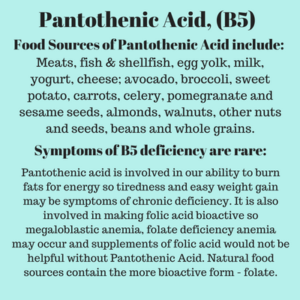“The answer is 17 years, what is the question: understanding time lags in translational research” – Morris, et al, 2011 (1)
It takes far too long for research findings to be ‘translated’ into health messages or techniques that reach the patient in need of health care guidance – 17 years on average according to the review of research study by Morris et al (2011). The team’s conclusion is that translational research is in need of further study but with more well defined terms and types of measurements so research by different teams can be compared. Twenty three studies were reviewed but the research parameters were diverse and not readily comparable. (1)
As a person with training and experience as a health care professional I followed general recommendations for general health and weight loss for many years but they didn’t help and I kept getting more sick with problems that didn’t show up on lab tests. Being told regularly that my symptoms must therefore be psychosomatic (mentally based) and that I should see a talk therapist did lead me to spending time with talk therapists and it helped somewhat but I kept getting more sick.
I knew I was physically sick, not just mentally making myself sick from stress or anxiety because I wasn’t always stressed or anxious and had always had some minor but chronic health problems as a child. So I eventually gave up on the standard not-helping-much answers and instead paid closer attention to my daily routine and dietary choices and slowly stopped doing any of the things that seemed to make me feel worse the next day. With the pay attention method I got somewhat better. Fibromyalgia and chronic fatigue symptoms were improved. Iodine supplements helped me with weight loss and a low dose antibiotic protocol developed for an autoimmune type of condition helped relieve my severe migraine problem.
Prescriptions can be quick and easy answers but they don’t always work, sometimes makes things worse, can delay trying other strategies that might work better – and can be expensive in insurance co-pays or be an out of pocket self pay expense. Health needs adequate sleep, with black out curtains and no lights, not even a digital alarm clock – keep it in a bedside table drawer or cover it with a towel. Even a little light at night can interfere with our production of melatonin and it helps with a variety of health needs throughout the body.
Health requires regular stretching and exercise that works out the heart and lungs and builds the other muscles somewhat. To maintain bone density requires weight bearing exercise – lifting weights in a warehouse or digging in a garden or in a gymnasium. Having the freedom to read text documents on your laptop while standing and using hand weights can multitask physical fitness needs with work or school needs. Varying positions and going for short walks occasionally is healthier than any type of job that requires too much of the same motions or having to stay in the same position for long periods of time.
Standing desks that can easily transition to a sitting desk can be as simple as a couple boxes under your laptop. Standing can allow some leg and arm stretches and then the boxes can be removed for some time spent sitting to type more intensively. Eight full hours in either position might be more of a health risk than being able to switch between the two options. (2)
Health requires all of the nutrients and additional fiber and antioxidants and other phytonutrients that aren’t considered essential in the same way vitamins are but may be necessary for more optimal health.
If it is reasonable to want to prevent measles or chickenpox, or other infectious diseases, then it seems reasonable to want to prevent age related degenerative disease by providing the body more of what it needs to remove toxins and rebuild tissue as it wears out. Even brain cells are replaced with new ones – our entire body is not the same body that we had as a newborn. We are regularly removing old cells and growing new ones.
All truths are easy to understand once they are discovered. The point is to discover them. ~ Galileo
And the point of translational research is to improve the process of translating research findings into effective strategies for patient care. If research is still in early stages it may not be safe for all patients, finding out how to identify which patients it might help would then be a necessary step before translating the findings into patient education messages or health care protocols. How to guides ideally will always include safety warnings about which patients the health messages might harm if they were to use or be ineffective for their use.
As an individual it is good to know your rights as a patient and to seek health care professionals that take the time to listen. As a patient seeking a second opinion may be helpful and it can be helpful to write down your symptoms and mood changes, your daily diet or sleep habits, and any other routine habits in order to look back occasionally to see if any patterns show up in what is helping or not helping you feel better. We all need to remember that we are the ones living our lives and that makes us the ones in charge of taking care of our own health as best as we can.
It can take three weeks or more to build a habit and that suggests the reverse is likely true – and keeping a written tally sheet about the habit you want to change can help stay on track and help show where you may be veering off track. For more guidance, see Changing Habits, The Learning Center, University of North Carolina. (3)
Your Health Insurance agent is not your mother (probably), and in the current system large bills can lead to more profit for health insurance companies – so watch out for your own budget by taking care of exercise, diet, and sleep habits and send your Health Insurance agent a nice card at the holidays instead of having them on speed dial for questions about your enormous co-pays. Insurance is nice but 10 or 20% of an enormous bill is still more than most of us have in the bank or can easily borrow. (4)
Bankruptcy due to health care costs has become too common – stay out of bankruptcy court by spending more time on daily health care habits – the research is fairly conclusive regarding the basics –
- ideally at least 30-60 minutes of exercise 3-5 times per week,
- drink plenty of water for thirst
- and eat 5-9 servings of vegetables/whole fruit per day, get adequate protein, whole grains and essential omega 3 fatty acids without too much saturated and trans fats each day. Trying to include a serving of fatty fish three times per week can be a source of omega 3 fatty acids or vegetarian sources include walnuts, hemp seed kernels or ground flax seeds. Including a serving of beans, nuts and seeds on most days may increase the amount of magnesium and other important trace nutrients in the daily/weekly diet.
- Six hours of sleep seems to be a minimum need for most people and more than eight hours on a regular basis may be too much or a sign of health or depression problems in adults once they are out of the teen years, (teens may benefit from ten hours of sleep per day, (6)). Short naps during the day can be a healthful activity and may increase work productivity, 20-30 minutes may be ideal. Longer naps may lead to waking up groggy instead of refreshed. (5)
- Social activity and other relaxing hobbies also seem to be helpful for health.
/Disclaimer: This information is provided for educational purposes within the guidelines of fair use. While I am a Registered Dietitian this information is not intended to provide individual health guidance. Please see a health professional for individual health care purposes. Thanks./
- Zoë Slote Morris, Steven Wooding, and Jonathan Grant,
The answer is 17 years, what is the question: understanding time lags in translational research., J R Soc Med. 2011 Dec; 104(12): 510–520. https://www.ncbi.nlm.nih.gov/pmc/articles/PMC3241518/
- Robert H. Shmerling, MD, The Truth Behind Standing Desks, Sept. 23, 2016, Harvard Health Blog, Harvard Health Publishing, health.harvard.edu, https://www.health.harvard.edu/blog/the-truth-behind-standing-desks-2016092310264?utm_campaign=shareaholic&utm_medium=twitter&utm_source=socialnetwork
- Changing Habits, The Learning Center, University of North Carolina, https://learningcenter.unc.edu/tips-and-tools/changing-habits/
- Why Your Health Insurer Doesn’t Care About Your Big Bills, propublica.org, https://www.propublica.org/article/why-your-health-insurer-does-not-care-about-your-big-bills
- Napping, sleepfoundation.org, https://sleepfoundation.org/sleep-topics/napping
- See Chapter Two: The Lost Hour, Po Bronson and Ashley Merryman, NurtureShock: New Thinking About Children, Twelve, Hatchette Book Group, New York, 2009 http://www.nurtureshock.com/
Additional references for more information on translational medicine:
Excerpt from a post about my own genetic screening (Genetic Screening can give guidance about potential medication adverse reactions, 2018):
Additional reference for further discussion of the advances in the use of genetic screenings for medication risk is available in a book that is already slightly dated with the rapid advances in technology but as a starting point it is helpful for an overview on the history of technological advances in the area of medical care: The Creative Destruction of Medicine: How the Digital Revolution will Create Better Health Care, by Eric Topol, M.D., 2013. Basic Books. ISBN: 978-0465061839. (1) (“Book Review…,” and summary, by Jung A Kim, RN, PhD, PubMed_2)
One of the pioneers in personal genetic screening was Esther Dyson, a venture capitalist. She quoted a colleague regarding why she agreed to be one of the first ten participants in the Personal Genome Project:
“You would no more take a drug without knowing the relevant data from your genome than you would get a blood transfusion without knowing your blood type.” [128] (1)
The future of individualized health care will include genetic screening for everyone and what isn’t addressed in the book by cardiologist and translational research specialist Eric Topol, M.D. is the use of genetic screening for individualized nutrition guidance. In addition to discovering what medications may work better or be more dangerous for an individual genetic screening can target which types of exercise or diet plans may be more or less beneficial and which nutrients may need to be restricted or supplemented more than the average guidance.
My previous genetic screening was for fewer genes but which were chosen as most commonly a problem for children on the autism spectrum – I had 11 of the 30 and the guidance led to supplements and diet changes that have helped me feel better and have better mood stability – Methylation Cycle Defects – in me, Genetic Screening “For Research Purposes Only” – at this stage “For Research Purposes Only” is a legal phrase as genetic screening is not considered consistent enough for use as a diagnostic tool, but my personal health is of significant interest to me.
- Eric Topol, M.D,, The Creative Destruction of Medicine: How the Digital Revolution will Create Better Health Care, 2013. Basic Books. ISBN: 978-0465061839. (1) Chapter 5, Biology: Sequencing the Genome, page 117: [128]
- Jung A Kim, RN, PhD, Book Review: The Creative Destruction of Medicine: How the Digital Revolution will Create Better Health Care, Health Inform Res. 2013 Sep; 19(3): 229–231. https://www.ncbi.nlm.nih.gov/pmc/articles/PMC3810531/ PubMed_2)
[128] Esther Dyson, “Full Disclosure,” Wall Street Journal, July 25, 2007, A15.


